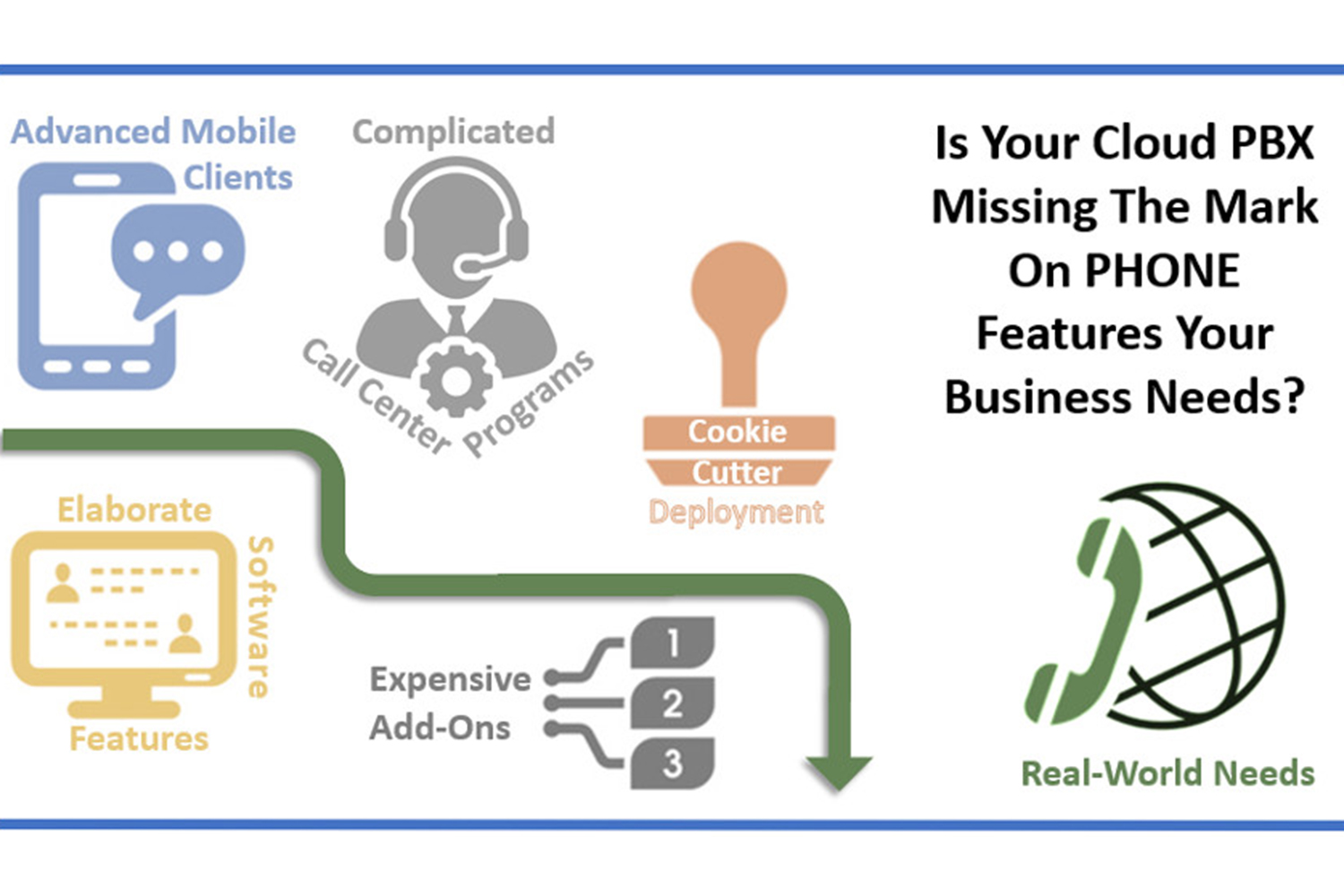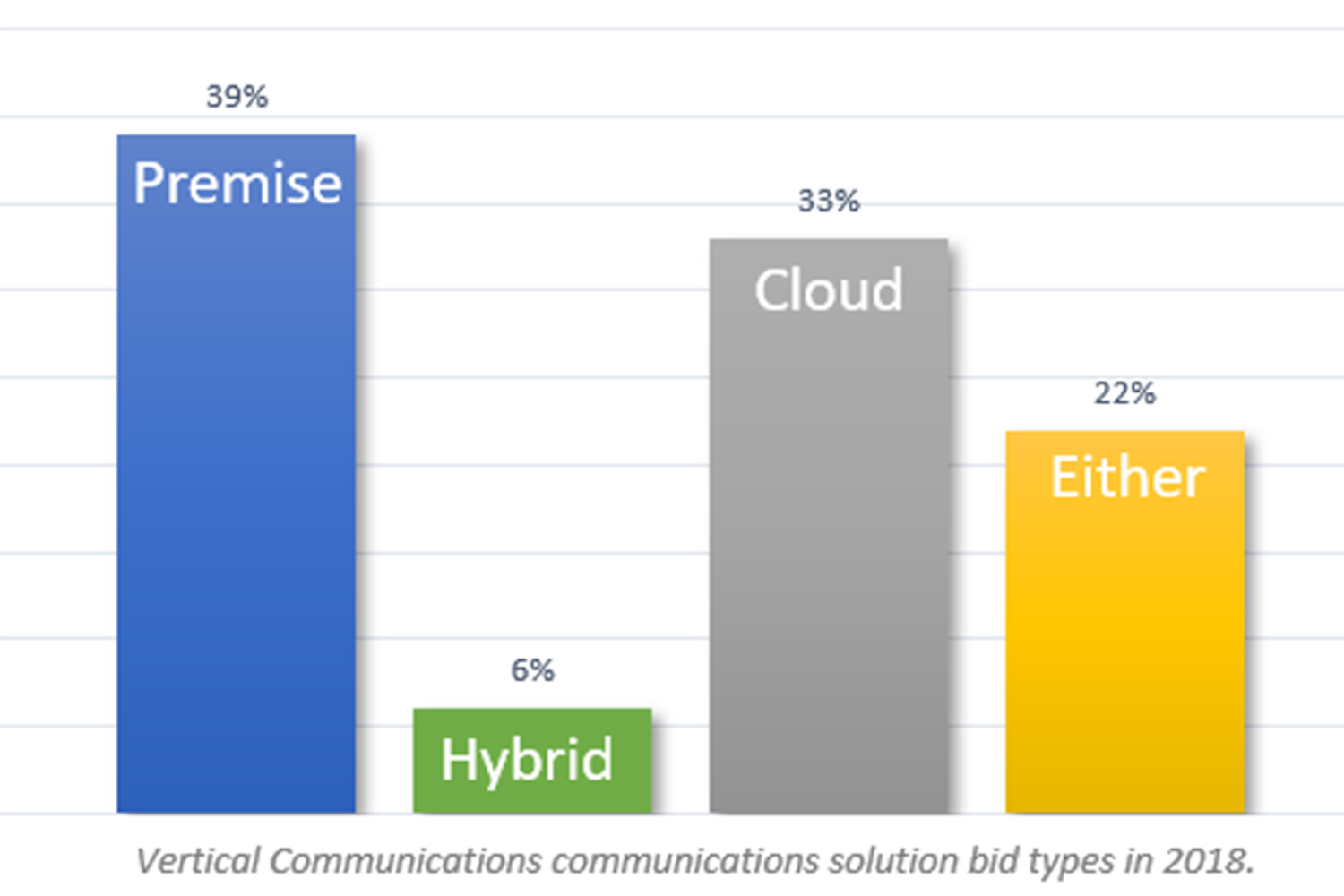Are Your Cloud’s Phone Features Missing the Mark?

Have you found yourself suffering from buyer’s remorse on your new cloud PBX service? The demos all looked great and the software was really impressive, but now that you’re using the system you’re finding yourself with problems?
Some of the most common issues we see with customers are:
- Losing phone features that they had on their old system.
- Having to change business processes due to limitations in the cloud system.
- Being forced to add-on costly optional services or packages to meet basic business needs.
- Missing integration to business software like CRM or ERP.
The good news is that these issues aren’t inherently a problem of cloud solutions and you don’t have to lose the advantages of the cloud just to fix them. To get started learning how to fix the problems, let’s first understand the three key causes.
Lack of Expert Guidance
One of the great things about buying a cloud PBX service today is the robust marketplace. There are lots of different options out there to meet different needs. There are services that have very advanced software features in the clients, but weak phone features. Other vendors offer comprehensive phone features. Some services focus on delivering a basic service at a really competitive price. No matter what your need is, the market has the answer.
Unfortunately, it’s easy to get stuck with the wrong service that doesn’t fit you well. If you didn’t go through a deep discovery process during your sales cycle, then it’s very possible you ended up with a bad fit. All of the cloud service providers aren’t the same and it’s important to get an expert involved who will dig into your current communications and help identify new needs.
If you are feeling frustrated with your current solution, it’s very possible that you had a bad fit to begin with. You can fix this by sitting down with an expert who can point you in the right direction. Remember that communications solutions are not one-size-fits-all.
Example
Many businesses are used to having phones with multiple line buttons to handle calls. This makes it easy to see incoming calls and switch between them. Your phone can alert you when a call is coming in (even when you are already on a call) and the line can tell you what type of call it is. This simple solution has worked for years, but some cloud services don’t support it. Choosing the right solution can easily avoid losing a feature like this.
Badly Tailored Solution
Once you have the right service, it’s still very easy to go wrong. At this point, many cloud services will dump you into a cookie-cutter process for setting up and deploying your phones and services. This may involve a phone call or two with a live person, but it’s mostly fully automated. While this keeps the service provider’s costs down, it doesn’t offer you the best solution.
If you’ve been through this assembly line deployment, then you may have been forced to give up on ways you used to do business and had to change your call-handling and processes to meet the limitations of their system. This can be frustrating, but even worse, it can be business-impacting. A badly designed call flow can result in frustrated customers who just hang up and go elsewhere. Limiting the features on a phone (or forcing users to switch to software clients to get those features) can result in less productive workers.
Don’t despair, this isn’t how cloud must be deployed. The right way to deploy cloud is with a solution architect designing the implementation to fit your business rather than changing your business to fit the solution. This continues the expert process started in choosing the right service. Now, the expert solution architect will work closely to implement your business process into the communications solution. All of the discovery work done during the sales process will come into play and be supplemented with further design meetings.
Not only will you not break your existing call flows, but an expert solution architect will find ways to enhance your company’s communications. This extra effort will result in a communications solution tailored to your company needs.
Example
Many businesses have developed complex call flows for handling their customer needs without even realizing it. This process can take years to perfect the right way of handling your customer’s specific needs. However, some cloud services offer a very standardized inbound call routing that doesn’t match your painstakingly constructed call flow. Too often the end-result is changing the proven solution and frustrated customers. A dedicated solution architect can work to understand your existing call flow and plan how to implement it.
Feature Miss
Sometimes the problem is more subtle than whether or not the cloud service has a feature or not. The issue can be with the feature itself. Telephone features can be very complex with lots of nuance to them. Just saying that a service has “Feature X” doesn’t mean that it works just like the “Feature X” that you have or need.
If you’re cloud purchase involved just going through a checklist of features without an expert going into detail on what your actual needs are, it might explain some of your problems. Deep-diving into features is a critical requirement for making sure that a cloud deployment is successful. Otherwise, you can end up very frustrated. Minor differences in feature set can make a big difference to your daily operations.
The worst part comes if the answer is to upgrade to a more expensive add-on or cloud package. Your vendor may have the exact feature you were looking for in the first place, but it’s going to cost more than you expected. If you have that expert digging into your needs from the very beginning, you can make sure that great value proposition that looked so good early on, is what you actually end up paying.
Example
Most businesses use some type of Customer Relationship Management (CRM) software to manage their customer base. Most cloud services will say they provide integration with CRM software. It’s a fairly standard feature. However, which CRM systems do they integrate to and what does that integration include? These details can mean the difference between success and failure for your cloud service.
Most cloud PBX services will integrate to Salesforce or Microsoft Dynamics. They are the industry leaders. If that’s what you are using, then that’s great, but many companies use different CRM products and that’s just the start of the problems. Even Microsoft Dynamics has 5 or 6 completely different versions. Salesforce offers two major platforms with several different levels of service and only some of them support common integration methods. It can be complicated. Once again, an expert can really help make the right choice.
Conclusion
If you’ve already been through all of this pain and suffering once, don’t repeat the same mistake. The answer to most cloud woes is to have an expert on your side. That expert should be involved from the early stages of the sales process to do a deep-dive discovery on what your company really needs. That same information should be used in the implementation process to make sure the solution is truly tailored to your business needs. Finally, the expert will help you understand the nuances of different features and avoid a late-breaking problem or unexpected expense.
It’s not too late to fix your cloud service problems. If you aren’t happy, Vertical Communications is ready to be your expert and find the right service for you. Please contact us today using the form below.



